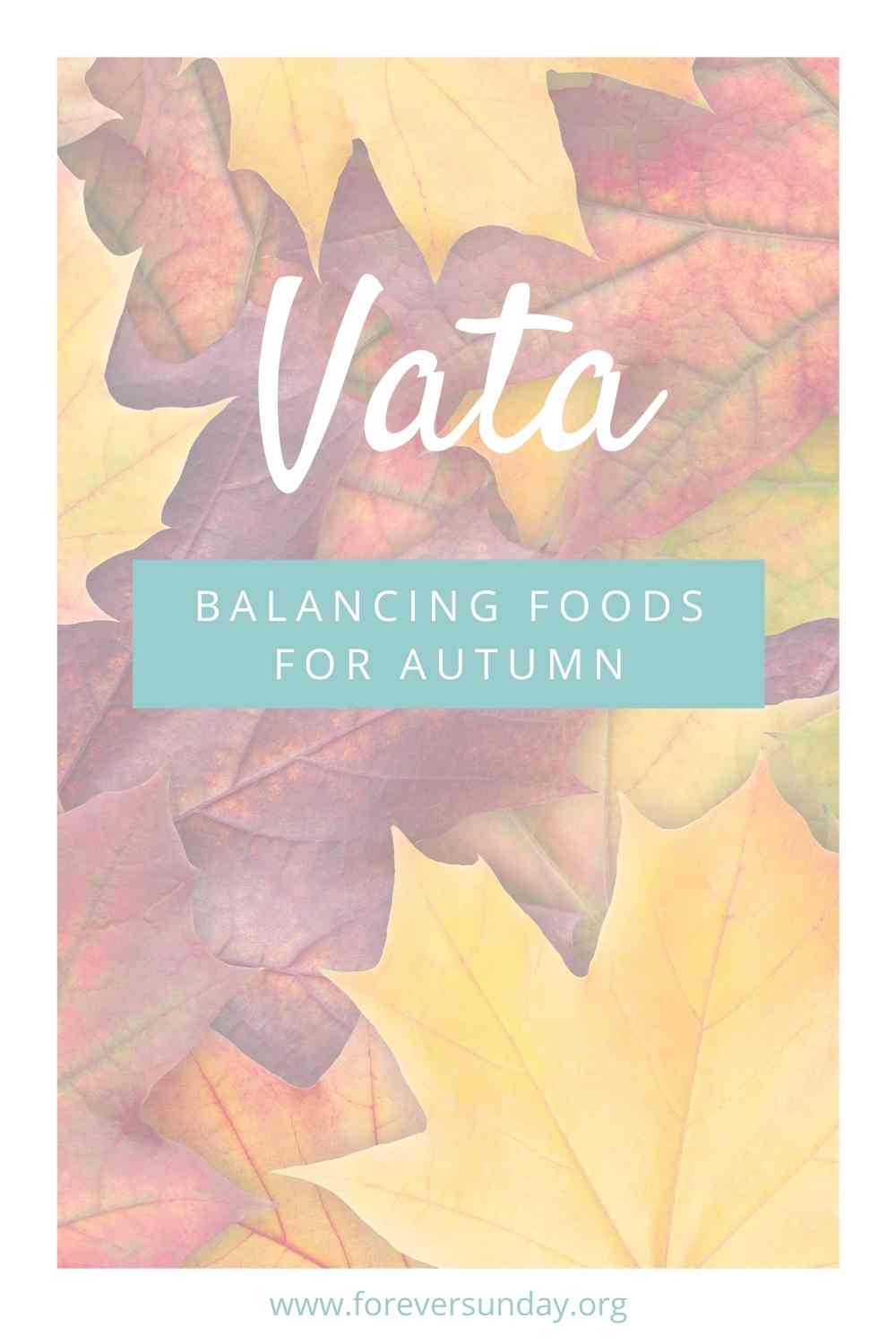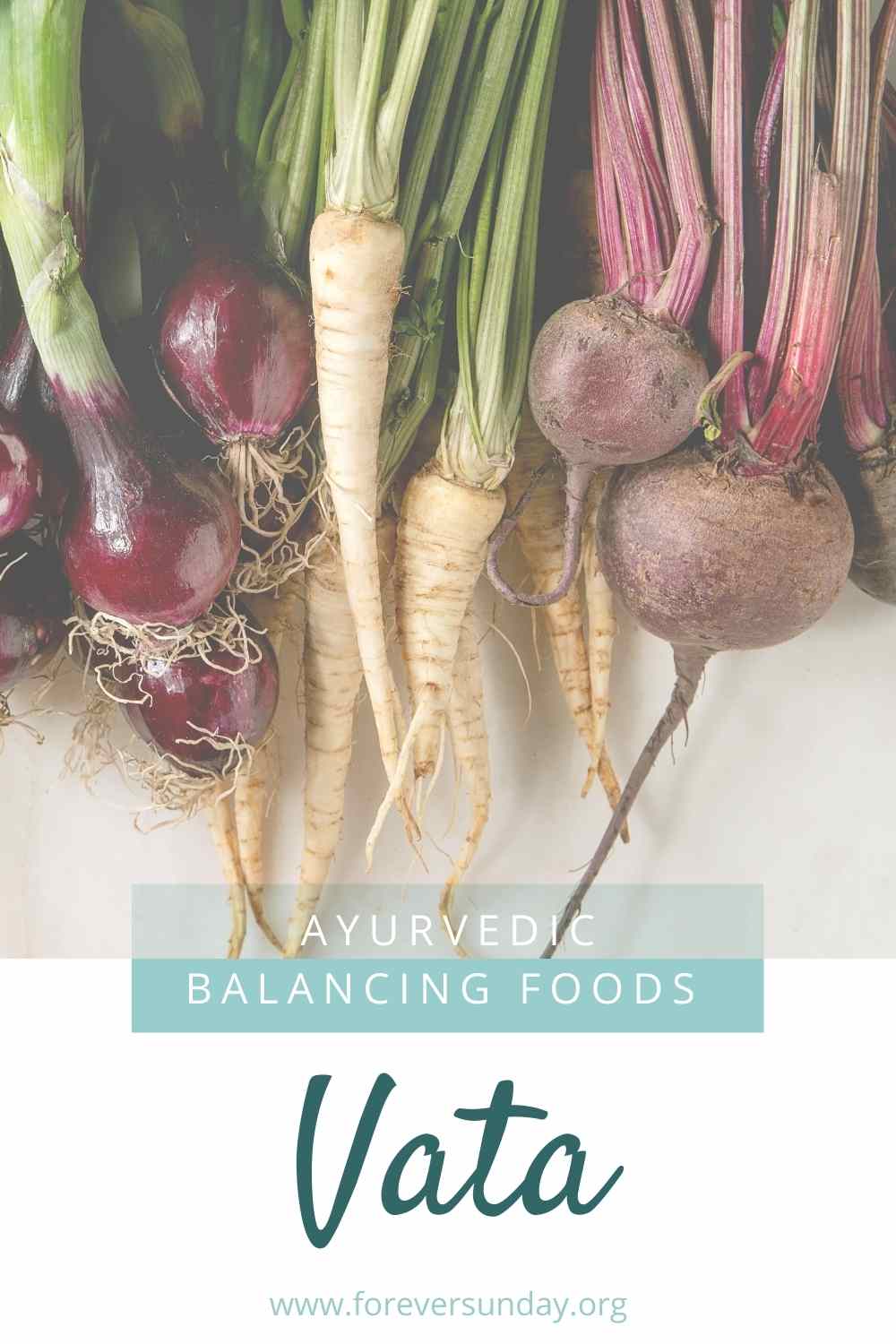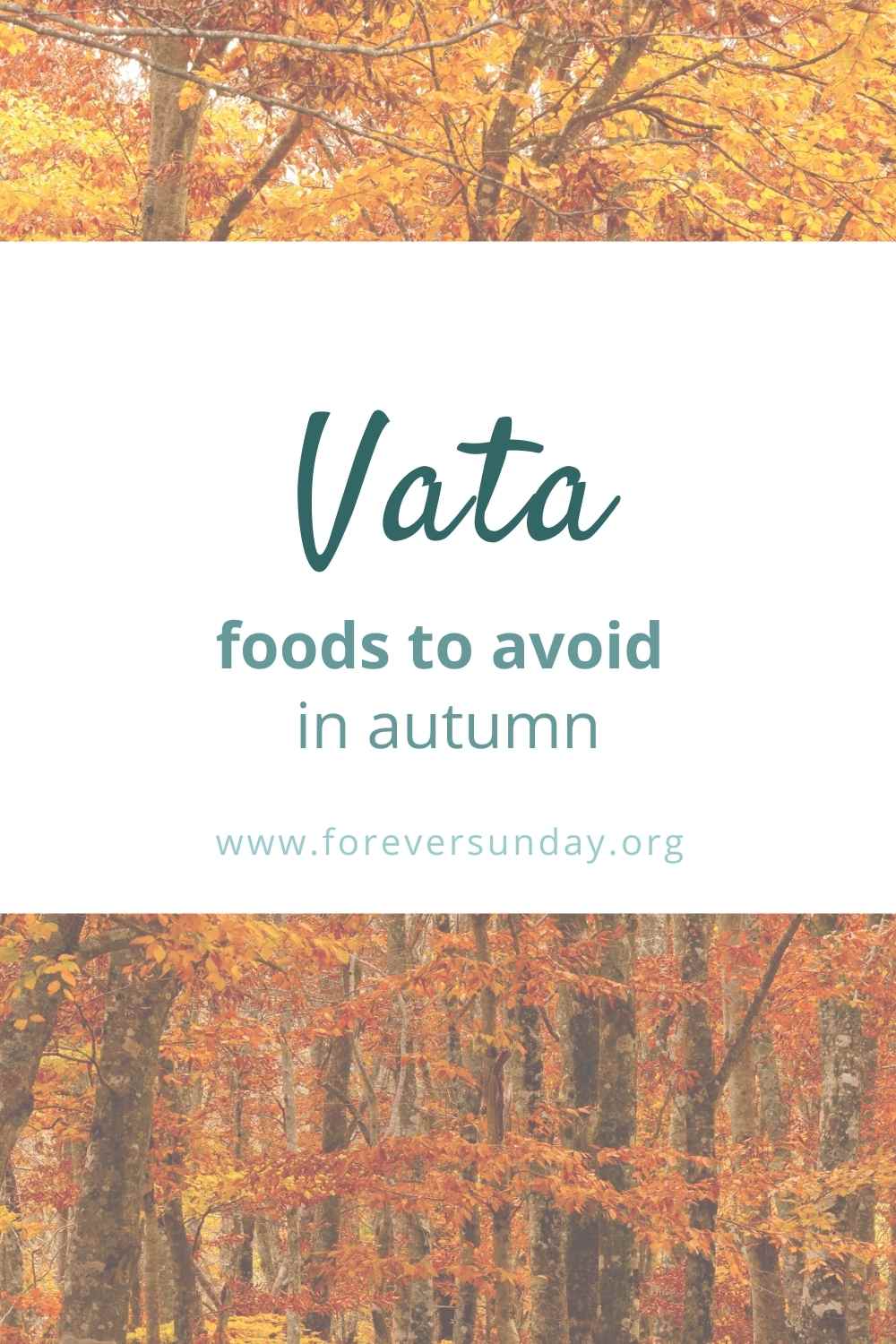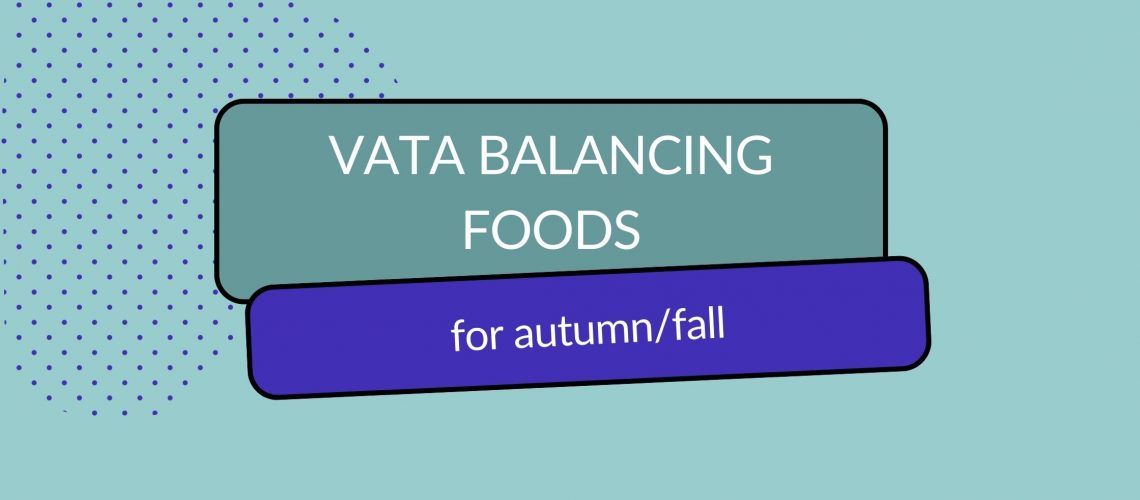Autumn (or fall). It’s here! The days are getting much shorter already… And it’s getting colder on this side of that big orb that we live on. In Ayurveda autumn is Vata season. Vata is one of the three doshas – or constitutions – that describe the human body.
Related: What is ayurveda?
Vata dosha is ruled by the space + air elements. Vata qualities are mobility, wind, cold, lightness, irregularity, dryness, roughness. Think about the mistral wind in France. If you have ever experienced it (or anything like it) you will know what I mean.

Autumn is the season of Vata aggravation
Like increases like
In Ayurveda we say: “like increases like”. Each dosha is increased in its corresponding season. In autumn it is easy for Vata to get aggravated or out of control.
However, if your constitution is heavily Kapha based, then you might actually start feeling better in this season! But remember, our environment is an important influencing factor for how we feel! So it’s important to keep these Vata balancing tips in mind.
Vata aggravation can lead to a rise in complaints like stiffness, respiratory problems, hoarseness, high blood pressure, anxiety, insomnia and digestive problems in the lower GI tract (colon, bladder). You might also start to feel more restless, insecure, indecisive, getting impatient and worrying,… The Vata mind out of balance is pretty frantic!
Eating seasonally
Through our food we can counter some of these excess Vata effects that we experience in autumn. Ayurveda makes a lot of sense, following the laws of nature. Every season gives us the food that we need! It is always best to eat foods that are in season, grown locally and ripened naturally.
That’s because seasonal eating is:
- better for your health, providing all the nutrients that you need in the current season
- more sustainable
- supporting the local economy
- cheaper!
Nowadays everything is available everywhere, anytime, and we are forgetting the basic knowledge about our food. Strawberries in winter? Crazy! They’re either grown with a lot of resources (heated greenhouses, fertilizer and pesticides) or flown in from far away. Take this new season as an opportunity for a fresh start!
So now that autumn is here, how can we balance Vata with food?
Vata balancing diet in autumn
Vata aggravating foods
There are Vata balancing foods and Vata aggravating foods (and foods with a neutral effect on Vata). High Vata foods are bitter, astringent and pungent. These are the kind of foods that we want to avoid in autumn. An excess of bitter, astringent and pungent foods will lead to an increase in Vata.
Examples of high Vata foods are: leafy greens and lettuces, cabbage, nightshades, legumes. This is because many of these produce wind in the body, and Vata is wind (air element) so we want to avoid eating too much of those.
High Vata foods are bitter, astringent and pungent
When I say ‘avoid’ these foods – there is no need to completely eradicate these foods from your diet in autumn! We need a little bit of each of the 6 tastes with every meal. In Ayurveda we just change the proportions of every taste with every season.
Vata balancing foods for autumn
The qualities of Vata balancing foods are:
- sweet, salty and sour (the taste or rasa),
- moist, heavy, smooth (guna)
- hot (virya or energy of the food) in nature.
To balance our Vata dosha we need to decrease the foods that are Vata producing and increase the foods that are Kapha and Pitta producing.
Ayurveda food lists
How to know what Ayurvedic properties a food has? Joyful Belly has a really good database where you can look up Ayurvedic properties of different ingredients.
To be honest, I’m not a big fan of food lists. Many people will take an Ayurvedic food list and use it too strictly (but not you, right?). An Ayurvedic food list is always a suggestion. It will give you insight into which foods are seasonal and balancing. The foods that are labeled “ok to eat occasionally” and “foods to avoid” should be eaten with care. Always listen to what your body is telling you.
If you’re experiencing Vata imbalances you really want to not eat the foods on the “avoid” list. If you have no Vata imbalances at all, you can go ahead even with the foods on the “avoid” list. I hope that makes sense. Let me know in the comments if it doesn’t!
TIP: To get a pdf printable of the Vata balancing foods for autumn, sign up for my resource library at the bottom of this post. :)

Vata balancing foods to favour in autumn
Veggies
artichokes, beets, carrots, leeks, onion, pumpkin and squashes, zucchini, sweet potatoes, olives, watercress
Fruits
apricots, avocado, bananas, berries, cherries, citrus fruits (lemons, limes, tangerines, oranges, grapefruits), fresh figs, fresh dates, grapes, papaya, mango, plums, peaches, pineapple, melons
Grains
whole grain rice, basmati rice, oats, wheat
Beans and legumes
mung dal, cooked tofu
Nuts
preferably lightly roasted (DIY!), nut milk, nut butters: almond,brazil, hazelnut, flax/linseed, macadamia, pecan, pine, pistachio, sesame seeds, sunflower seeds, walnuts
Dairy (always fresh and organic!)
butter, buttermilk, cottage cheese, ghee, yoghurt, kefir, raw cow’s milk
Oils
canola oil, sesame oil, sunflower oil
Herbs + spices
Basil, coriander, marjoram, rosemary, oregano, sage, thyme, bay leaves
Spices like anise, cumin, caraway, cardamom, chili pepper, black pepper, cinnamon, cloves, dill, fennel, nutmeg, mustard seeds, poppy seeds, paprika powder, safron, turmeric, black pepper, vanilla
rock salt, sea salt
Other
mustard (fresh, organic, not the supermarket kind), seaweed, carob, vinegar
Foods to eat occasionally in autumn
These are foods that are coming in or going out of season so you can still (or already) eat them. This list also includes Vata aggravating foods when eaten in excess.
Veggies
broccoli, cucumber, kale, lettuce, parsnips, radishes, spinach, sprouts, parsnips
Fruits
apples (ok when cooked with cinnamon), pears (ok when cooked), cranberries, pomegranate, quince
Grains
quinoa, barley, amaranth, couscous
Beans and legumes
lentils, aduki beans
Dairy
cheeses, goat’s milk, sour cream
Oils
coconut, mustard, olive, safflower, walnut oil
Herbs + spices
cayenne pepper, cilantro, garlic, fenugreek, horseradish, parsley
coconut milk and grated coconut, cashews, pumpkin seeds
Other
Sweeteners like cane sugar, fruit sugars, honey (raw), jaggery, maple sugar, molasses

Avoid these high Vata foods in autumn
Avoid these foods because they are not in season, or they are aggravating Vata. (Highly processed foods are aggravating all doshas)
Veggies
bell peppers, cabbage, cauliflower, celery, sweet corn, nightshades (eggplant, potatoes, tomatoes,…), raw onion, raw garlic, mushrooms, okra, peas, turnips
Fruits
prune (dried plum), persimmon, watermelon (eat on its own). (Fruits are generally vata pacifying)
Grains
buckwheat, corn, millet, rye
Beans and legumes
black-eyed peas, black gram, chickpeas, fava/broad beans, flat beans, lentils, kidney/navy/pinto beans, split peas, soy beans, peanuts (they are wind producing, wind = Vata)
Dairy
all non- organic dairy products, ice cream
Oils
animal fats, corn oil, mixed vegetable oil
Other
white sugar, brown sugar, coffee, carbonated drinks, highly processed foods
Read more:
Bad food combinations according to ayurveda
The ideal way to start your day: upgrade your morning routine the ayurvedic way



